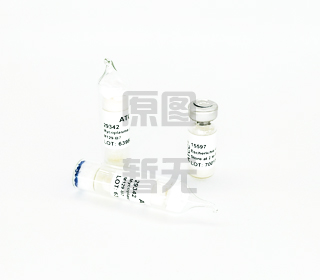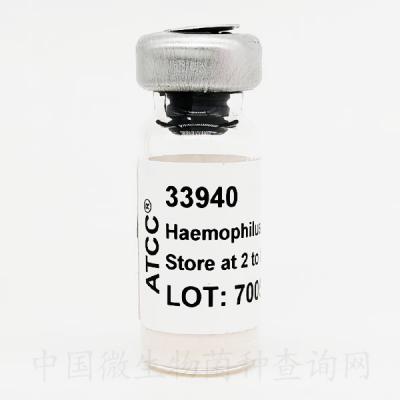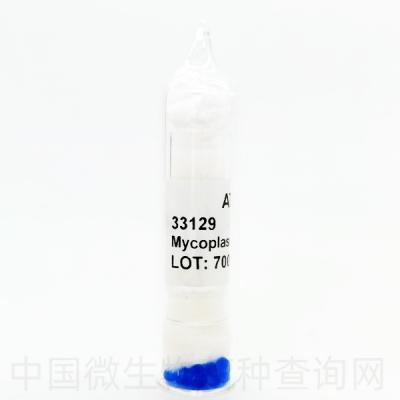
ATCC® Number:30731™
Organism: Acanthamoeba griffini Sawyer
Designations: S-7
Isolation: shallow-water, beach-bottom sample, New London, CT, 1962
Depositors: TK Sawyer
History: ATCC<<--TK Sawyer<<--J. Griffin
Biosafety Level:1
Shipped: frozen
Growth Conditions: ATCCmedium 997: Fresh water ameba mediumTemperature: 25.0°C Duration: grown with bacteria Protocol: ATCCNO: 30011 SPEC: This strain is distributed as a dried preparation. See the general procedures for opening a dried vial. Aseptically add 1 ml of sterile distilled water to the inner shell vial, remove the filter paper aseptically with a pair of forceps, and place it in the center of an agar plate of ATCCmedium 997. Add the liquid remaining in the vial to the plate and spread it evenly over the surface of the plate. Incubate the plate at 25C. Trophozoites (amebae) should be evident within 2-3 days.
Permits/Forms: In addition to the MTA mentioned above, other ATCC and/or regulatory permits may be required for the transfer of this ATCC material. Anyone purchasing ATCC material is ultimately responsible for obtaining the permits. Please click here for information regarding the specific requirements for shipment to your location.
Comments: species description [4771] [20723] Group I introns [4726] Subgenus systematics based upon SSU rDNA sequence data [21640] Molecular characterization of corneal pathogen [23850] phylogeny [24028]
Cross References: Nucleotide (GenBank) : AF019060 Acanthamoeba hatchetti 2AX1 18S ribosomal RNA gene, partial sequence.Nucleotide (GenBank) : U02540 Acanthamoeba griffini S-7 ATCC30731 nuclear small subunit ribosomal gene, group I intron.Nucleotide (GenBank) : U07412 nuclear SSU rRNA gene
Classification: KINGDOM: Protozoa
References: 4726: Gast RJ, et al. Discovery of group I introns in the nuclear small subunit ribosomal RNA genes of Acanthamoeba. Nucleic Acids Res. 22: 592-596, 1994. PubMed: 8127708 4771: Sawyer TK. Acanthamoeba griffini, a new species of marine amoeba. J. Protozool. 18: 650-654, 1971. 20723: Nerad TA, et al. Acanthamoeba pearcei n. sp. (Protozoa: Amoebida) from sewage contaminated sediments. J. Eukaryot. Microbiol. 42: 702-705, 1995. PubMed: 8520585 21640: Gast RJ, et al. Subgenus systematics of Acanthamoeba: Four nuclear 18S rDNA sequence types. J. Eukaryot. Microbiol. 43: 498-504, 1996. PubMed: 8976608 23850: Ledee DR, et al. Acanthamoeba griffini, molecular characterization of a new corneal pathogen. Invest. Ophthalmol. Vis. Sci. 37: 544-550, 1996. PubMed: 8595954 23896: Daggett PM, et al. Distribution and possible interrelationships of pathogenic and nonpathogenic Acanthamoeba from aquatic environments. Microb. Ecol. 8: 371-386, 1982. 24028: Daggett PM, et al. A molecular approach to the phylogeny of Acanthamoeba. Biosystems 18: 399-405, 1985. PubMed: 4084681 43732: Stothard DR, et al. Fluorescent oligonucleotide probes for clinical and environmental detection of Acanthamoeba and the T4 18S rRNA gene sequence type. J. Clin. Microbiol. 37: 2687-2693, 1999. PubMed: 10405422 49105: Khan NA, et al. Proteases as markers for differentiation of pathogenic and nonpathogenic species of Acanthamoeba. J. Clin. Microbiol. 38: 2858-2861, 2000. PubMed: 10921939 52568: Schroeder JM, et al. Use of subgenic 18s ribosomal dna pcr and sequencing for genus and genotype identification of acanthamoebae from humans with keratitis and from sewage sludge. J. Clin. Microbiol. 39: 1903-1911, 2001. PubMed: 11326011 57068: Kong HH, et al. Mitochondrial DNA restriction fragment length polymorphism (RFLP) and 18S small-subunit ribosomal DNA PCR-RFLP analyses of Acanthamoeba isolated from contact lens storage cases of residents in southwestern Korea. J. Clin. Microbiol. 40: 1199-1206, 2002. PubMed: 11923331 70805: Ledee DR, et al. Advantages of using mitochondrial 16S rDNA sequences to classify clinical isolates of Acanthamoeba. Invest. Ophthalmol. Vis. Sci. 44: 1142-1149, 2003. PubMed: 12601042 71069: Marciano-Cabral F, Cabral G. Acanthamoeba spp. as agents of disease in humans. Clin. Microbiol. Rev. 16: 273-307, 2003. PubMed: 12692099





